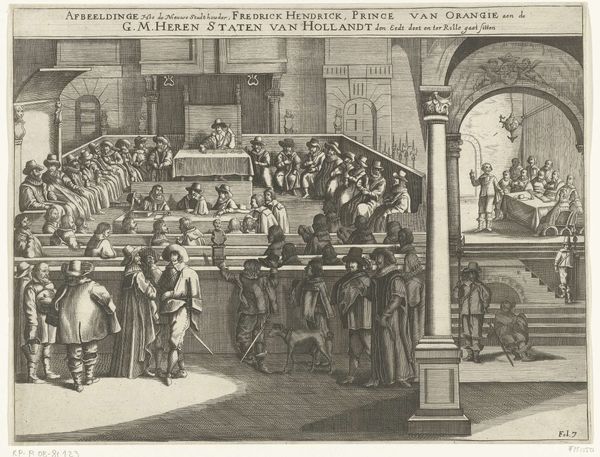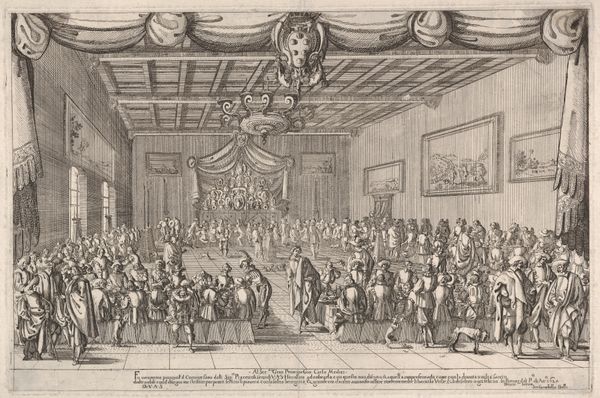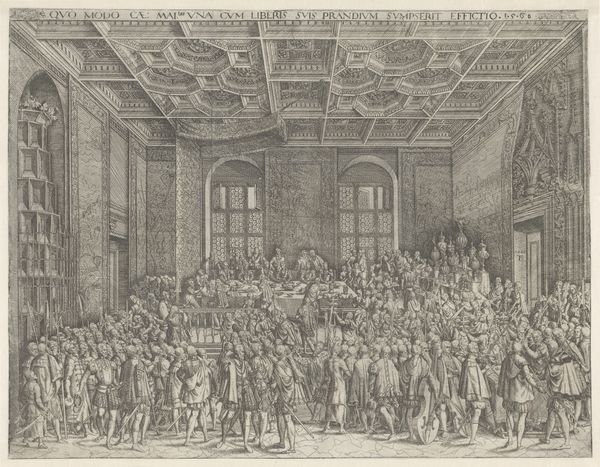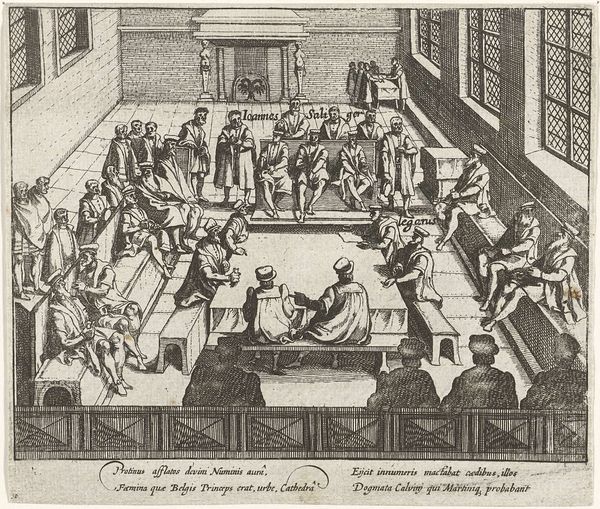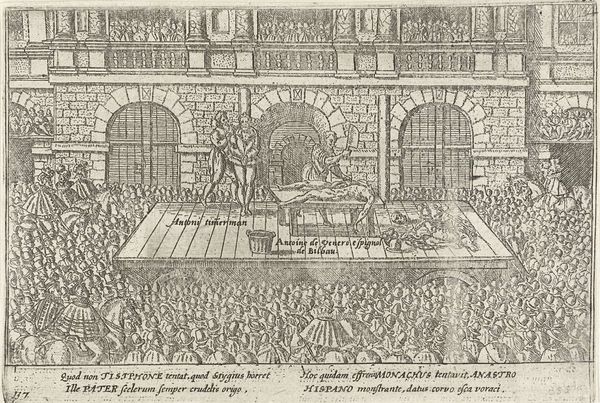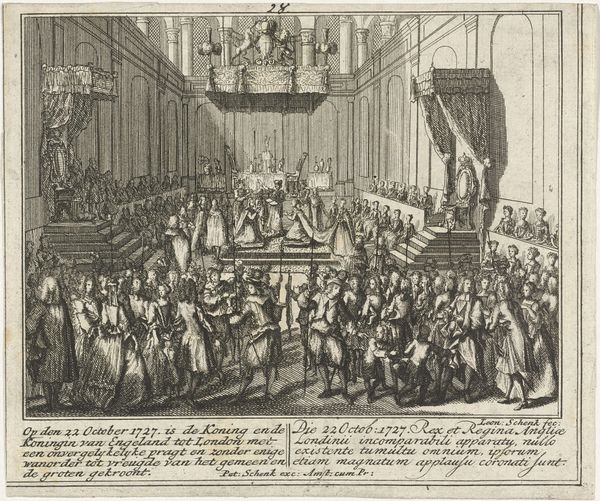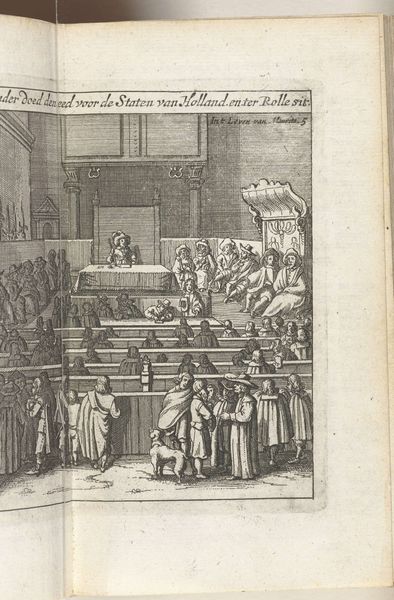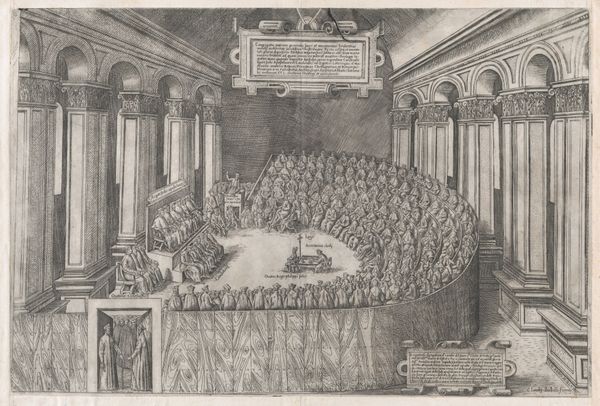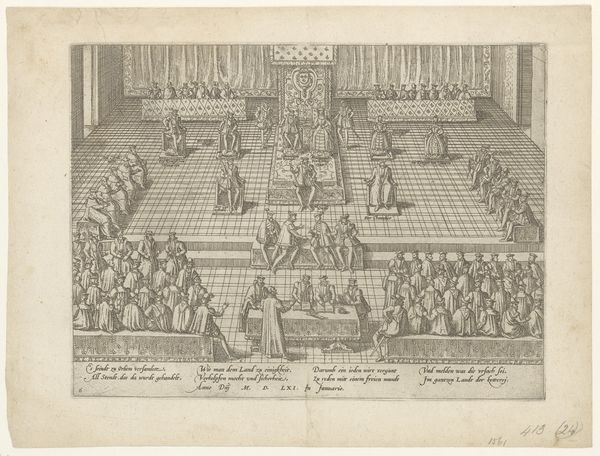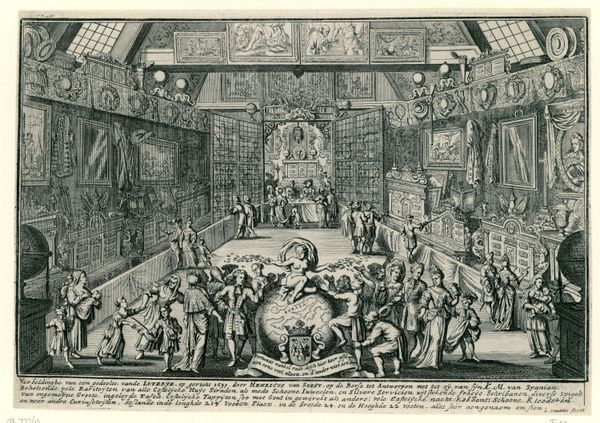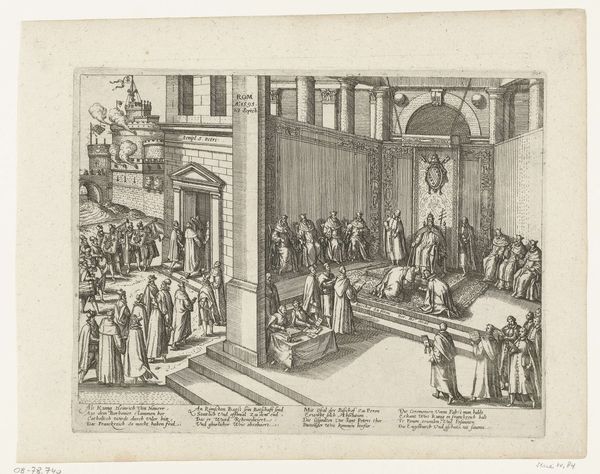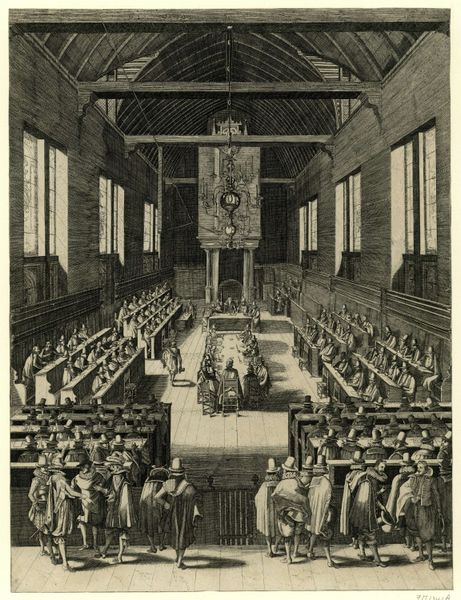
Speculum Romanae Magnificentiae: Vatican Reception of the Duke of Tuscany 1570 - 1575
0:00
0:00
drawing, print, engraving
#
drawing
# print
#
perspective
#
11_renaissance
#
cityscape
#
genre-painting
#
history-painting
#
italian-renaissance
#
engraving
Dimensions: sheet: 14 3/16 x 19 7/16 in. (36 x 49.4 cm)
Copyright: Public Domain
Editor: Here we have Étienne Dupérac's "Speculum Romanae Magnificentiae: Vatican Reception of the Duke of Tuscany," dating roughly from 1570 to 1575. It's an engraving, giving us a detailed view of an event inside what I presume is the Vatican. The sheer amount of detail is fascinating. How would you interpret the choice of engraving for this subject matter? Curator: Considering this print's creation during the Renaissance, we need to look at engraving as a form of early mass media. Its materiality allowed for the wider dissemination of images, serving a documentary function while also shaping perceptions of power. How do you think this print served its patron or commissioner? Editor: That's interesting. I hadn't considered the impact of it being easily reproducible. I guess it helped to publicize the Duke's visit, solidifying his status and relationship with the Vatican through visual representation distributed amongst a wider audience. Curator: Precisely. Think about the labour involved – the engraver, the paper makers, the printers – all contributing to the production and circulation of this image. The material process itself became a key element in constructing and reinforcing social hierarchies. The architecture too; the building almost overshadows the depicted event. Editor: Right, the architecture! You are absolutely correct that the venue itself, so intricately rendered here using engraved lines, emphasizes not just the reception of the Duke, but primarily, it elevates the enduring power of the papacy. It’s clever to highlight that because initially the scene appeared to be just documenting a singular meeting. Curator: Indeed, and the engraving medium facilitates that architectural precision. It brings to the fore a reading centered around the control and assertion of authority. What did you glean from our chat? Editor: I never truly considered the societal effects related to distribution of materials in art during this period, or at least I haven’t made those connections so concretely before. This materialist view makes this particular image come alive in a completely unexpected manner.
Comments
No comments
Be the first to comment and join the conversation on the ultimate creative platform.

